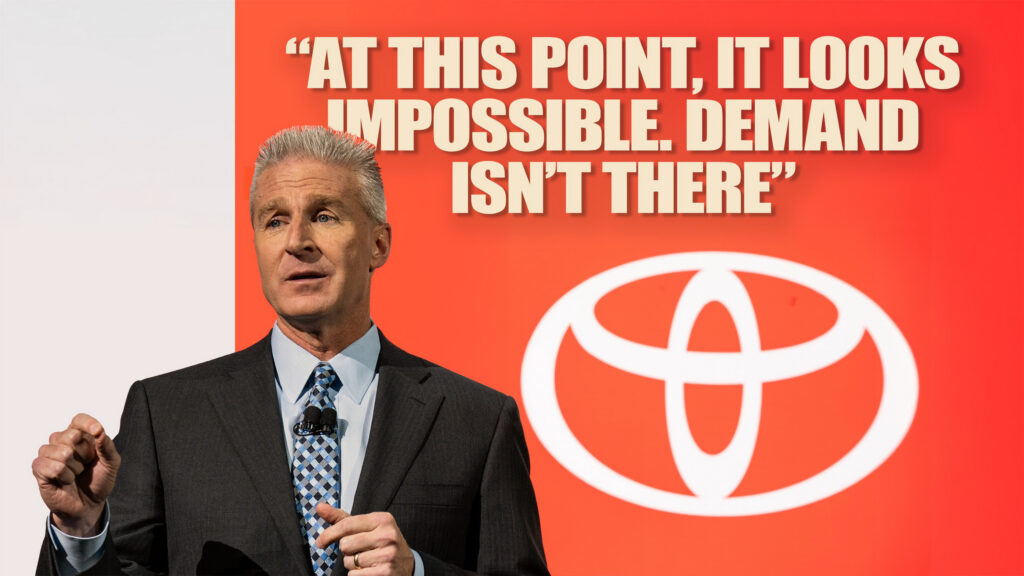- California will require 35% of new vehicles sold to be PHEVs or zero-emissions starting with the 2026MY.
- The percentage of electric vehicles will increase annually, reaching 100% by the 2035 model year.
- Toyota’s Jack Hollis called the EV mandate “impossible,” citing a lack of demand for electric vehicles.
California’s emissions wavier has effectively created two sets of regulations and it’s been a contentious issue for years. That continues to this day as Toyota Motor North America’s Chief Operating Officer has called upcoming rules “impossible.”
The remarks were reportedly made in regards to Advanced Clean Cars II regulations, which aim to “rapidly scale down light-duty passenger car, pickup truck, and SUV emissions starting with the 2026 model year.” When the rules go into play, automakers are supposed to have 35% of sales come from plug-in hybrid or zero-emission vehicles. That percentage then increases annually and eventually hits 100% for the 2035MY.
More: SEMA Sues California To Block Sweeping EV Mandate
While that’s the short and dirty version, it’s basically wishful thinking. According to CNBC, Toyota’s Jack Hollis said “I have not seen a forecast by anyone … government or private, anywhere that has told us that that number is achievable.” He reportedly went on to say “it looks impossible” at this point.
Hollis said there isn’t enough demand for EVs and other qualifying models, while adding the “unnatural” move would “limit a customer’s choice.” This is interesting to note as even democrats, such as Michigan senator-elect Elissa Slotkin, campaigned against EV mandates and said “What you drive is your call, no one else’s.”

If California has their way, they’ll be calling the shots. That’s part of the reason why Toyota wants one national standard as it would prevent any one state from putting their thumb on the scale and affecting everyone.
As Hollis explained, “We would always want a 50-state rule, because that way we can treat all customers, all dealers, equally, fairly, whatever that might be.” He went on to express hope that state and federal regulators could come together and create “something that is achievable.”





